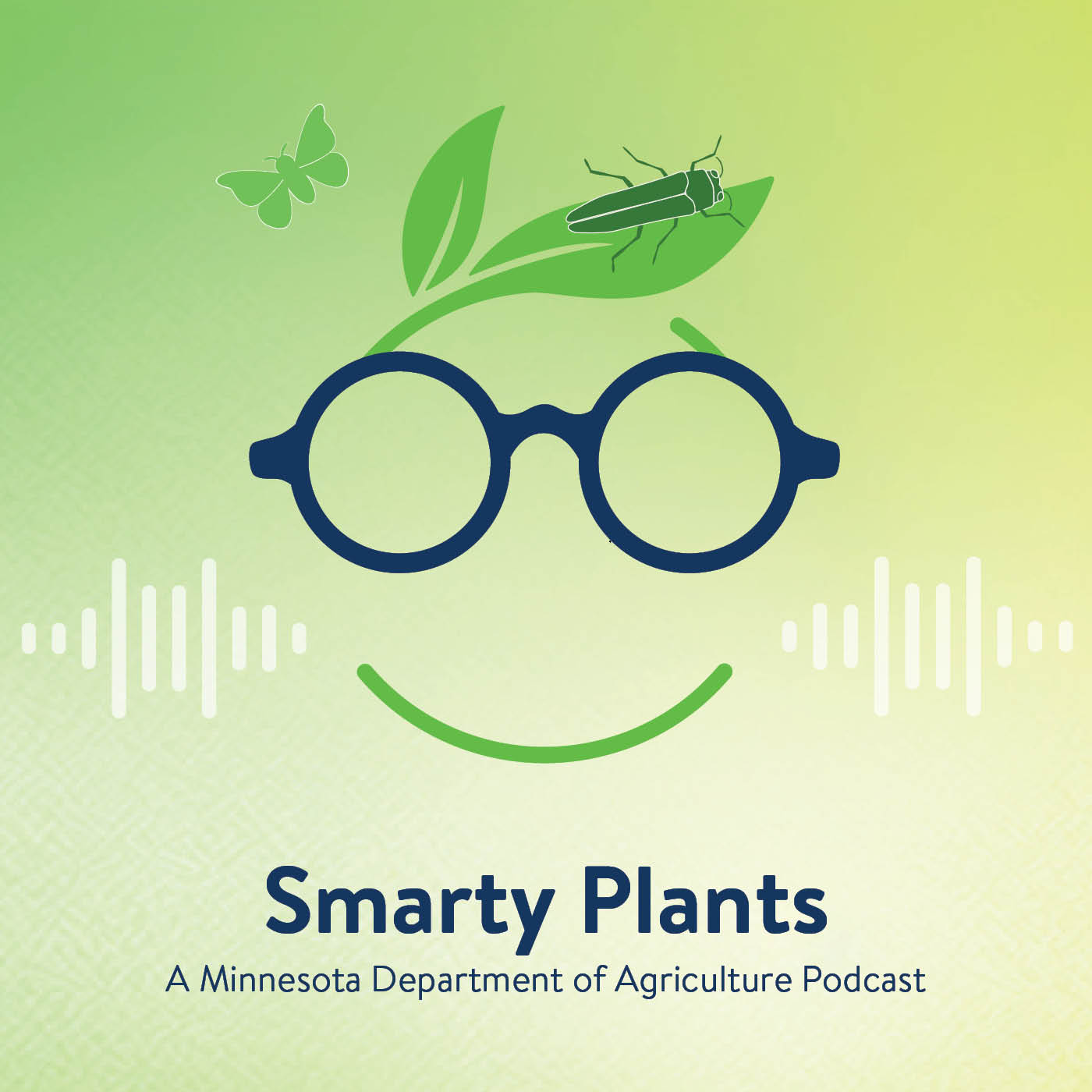PFAS Statement
Beginning January 1, 2026, pesticide registrants must annually provide a statement to the MDA indic
 Discover Smarty Plants, the Minnesota Department of Agriculture's podcast that digs into the fascinating world of invasive species. Join expert guests as they share insights and solutions to protect our environment and agricultural resources. Visit Smarty Plants and start listening today.
Discover Smarty Plants, the Minnesota Department of Agriculture's podcast that digs into the fascinating world of invasive species. Join expert guests as they share insights and solutions to protect our environment and agricultural resources. Visit Smarty Plants and start listening today.
Continued monitoring of stink bug numbers is important so that areas where agricultural pest problems might develop can be anticipated. The MDA and the U of M continue to facilitate trap-based monitoring at high-risk sites for damage, such as apple orchards. In addition, citizen reports are an important tool in tracking stink bug numbers. If you observe an insect that looks like BMSB outside the Twin Cities metro area, please take a picture or sample and contact the MDA via Report a Pest.
Although BMSB is slowly spreading in affected states by flying from crop-to-crop, it is also a hitchhiker, and individuals can quickly be transported into new states on vehicles, trailers, RV’s, or by moving infested materials (e.g. woodsheds). To slow this spread, please inspect your vehicles and any accompanying equipment, and remove any suspect insects before leaving heavily infested areas, such as the eastern U.S.
In Mid-Atlantic states, where BMSB is a severe problem, an integrated pest management approach is being employed that combines monitoring, insecticide use, and other natural methods. Research is ongoing on the development of biocontrol throughout the country.
Continued monitoring of stink bug numbers is important so that areas where agricultural pest problems might develop can be anticipated. The MDA and the U of M continue to facilitate trap-based monitoring at high-risk sites for damage, such as apple orchards. In addition, citizen reports are an important tool in tracking stink bug numbers. If you observe an insect that looks like BMSB outside the Twin Cities metro area, please take a picture or sample and contact the MDA via Report a Pest.
Although BMSB is slowly spreading in affected states by flying from crop-to-crop, it is also a hitchhiker, and individuals can quickly be transported into new states on vehicles, trailers, RV’s, or by moving infested materials (e.g. woodsheds). To slow this spread, please inspect your vehicles and any accompanying equipment, and remove any suspect insects before leaving heavily infested areas, such as the eastern U.S.
In Mid-Atlantic states, where BMSB is a severe problem, an integrated pest management approach is being employed that combines monitoring, insecticide use, and other natural methods. Research is ongoing on the development of biocontrol throughout the country.
Continued monitoring of stink bug numbers is important so that areas where agricultural pest problems might develop can be anticipated. The MDA and the U of M continue to facilitate trap-based monitoring at high-risk sites for damage, such as apple orchards. In addition, citizen reports are an important tool in tracking stink bug numbers. If you observe an insect that looks like BMSB outside the Twin Cities metro area, please take a picture or sample and contact the MDA via Report a Pest.
Although BMSB is slowly spreading in affected states by flying from crop-to-crop, it is also a hitchhiker, and individuals can quickly be transported into new states on vehicles, trailers, RV’s, or by moving infested materials (e.g. woodsheds). To slow this spread, please inspect your vehicles and any accompanying equipment, and remove any suspect insects before leaving heavily infested areas, such as the eastern U.S.
In Mid-Atlantic states, where BMSB is a severe problem, an integrated pest management approach is being employed that combines monitoring, insecticide use, and other natural methods. Research is ongoing on the development of biocontrol throughout the country.
 Discover Smarty Plants, the Minnesota Department of Agriculture's podcast that digs into the fascinating world of invasive species. Join expert guests as they share insights and solutions to protect our environment and agricultural resources. Visit Smarty Plants and start listening today.
Discover Smarty Plants, the Minnesota Department of Agriculture's podcast that digs into the fascinating world of invasive species. Join expert guests as they share insights and solutions to protect our environment and agricultural resources. Visit Smarty Plants and start listening today.
Beginning January 1, 2026, pesticide registrants must annually provide a statement to the MDA indic